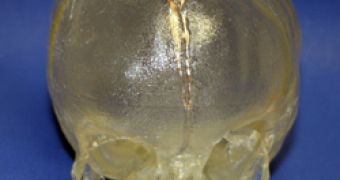Humans can be beset by an alarming number of different health conditions from a very early age, even before they leave the womb, but technology has been getting better and better at solving problems, and 3D printing is making its contribution, as we're about to see.
Granted, there are many diseases and injuries that can't easily be dealt with, or perfectly mended, but humankind is getting better.
In today's example, a 6-month-old baby has been cured of Plagiocephaly, or “flat head syndrome” as the issue is otherwise called.
Plagiocephaly happens when one of the growth plates in the skull fuses prematurely, causing the forehead to be flat, as well as a bulge and overall asymmetry in the skull.
It's not totally clear if the condition only has cosmetic repercussions or if it affects the brain activity and development of the person.
Either way, it's not a great condition to be in, so Drs. Michael Egnor and Elliot Duboys of Stony Brook University used CAD and 3D printing to find a solution.
Interestingly enough, they planned part of the operation over the Internet. The Stony Brook doctors sent the CAD model of the child's skull to Medical Modelling Inc. in Golden Colorado.
There, Dr. Duboys prepared for the surgery by creating 3D images of the child's skull as it should appear after the surgery.
Thus, he and his team of surgeons were able to use both virtual models and a 3D printed skull as guides for the procedure. Practice as it were.
Thus, surgical time was drastically reduced, and the success chance of the operation increased beyond what it would have otherwise been.
Remote planning of surgeries can become a very important part of medicine because of all this. Experts don't come in great supply in remote, impoverished regions, but 3D printing and the Internet can at least allow them to walk others through an operation, or provide them with the means to gain that expertise themselves.

 14 DAY TRIAL //
14 DAY TRIAL //